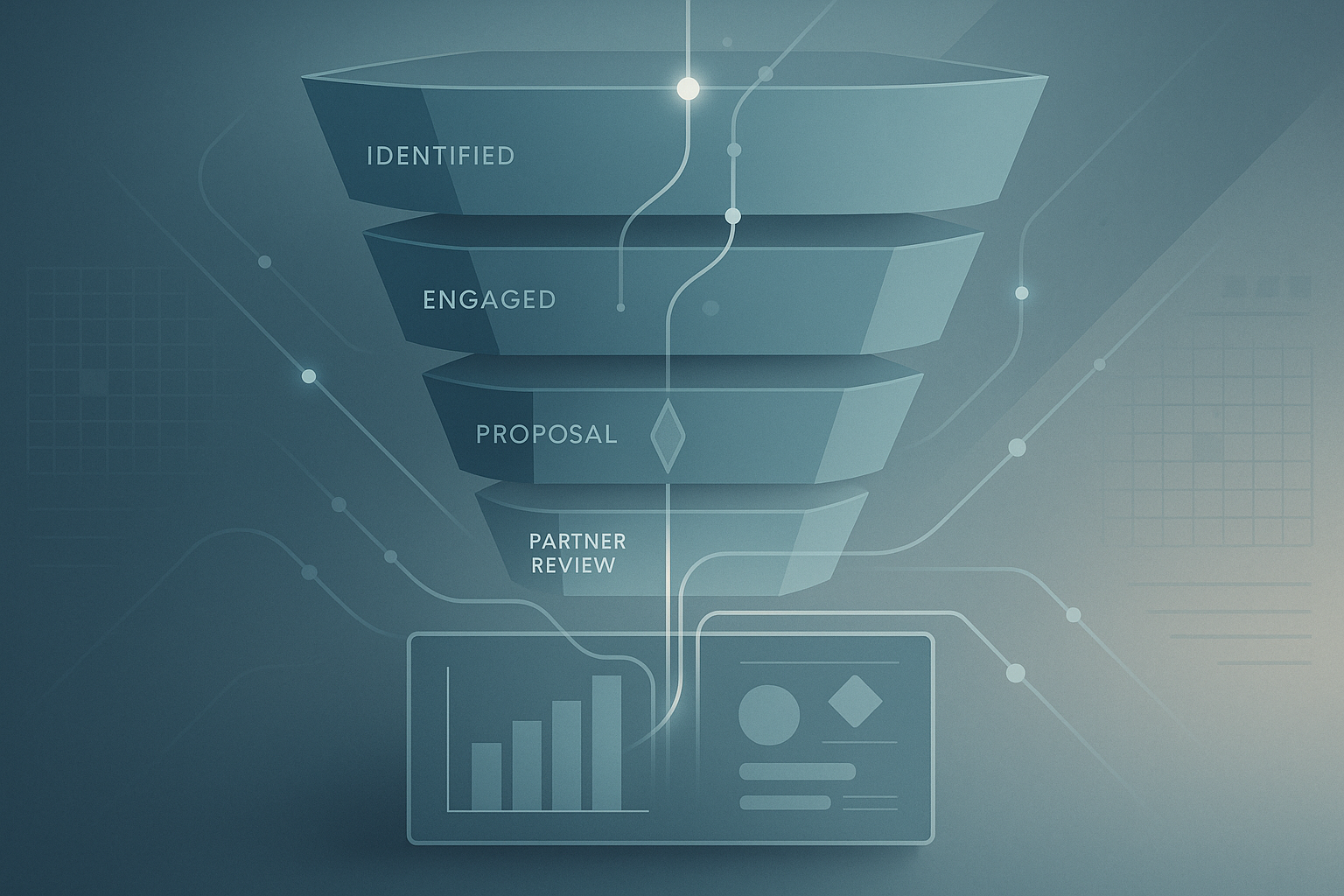Account Based Marketing... What is it and why should you be using it?
Digital Marketing
Digital Transformation

Account Based Marketing, or ABM for short, is an exciting concept that seems to be creeping more and more into the mainstream B2B digital marketing thinking.
You would be forgiven for thinking that ABM was just another buzzword, thrown around on Linkedin and other marketing blogs, but ABM is something you should be paying attention to. If you are running an inbound marketing strategy at your company then chances are that you will have come across the concept.
So, what exactly is Account Based Marketing?
It’s a good question because ABM is often explained in very different ways and, in fact, the ABM way of thinking has been around since before the internet.
Let’s take a look!
What is Account Based Marketing?
ABM and the concept behind it is exciting because it’s essentially breaking down the wall of traditional marketing.
Historically, you would target your marketing efforts to a certain industry or group of people who are your target audience or customer. ABM, on the other hand, is where you would take an individual account and treat it as a market of one.
It’s marketing that’s incredibly personalised and is focused on addressing the specific needs of individuals and decision makers within a company. Often it’s associated with big B2B accounts that have multiple decision makers but it can be used for any sort of B2B account.
Earlier, I mentioned that if you have an inbound marketing strategy then you will probably be familiar with ABM because both inbound marketing and ABM compliment each other very well. And that’s the reason why you are probably hearing more and more about ABM within digital marketing, especially as inbound has taken off over the last few years.
Using both inbound and ABM together can yield some fantastic results.
How to use ABM effectively
Research
Like any type of marketing strategy, research is an essential starting point for ABM.
You should already have a list of prospects that you want to target with your marketing; the next step is to find out as much as you can about each of these companies.
That includes the people who work there, the company structure, the decision makers and the people who can influence the decision makers. This will define what you can offer in terms of personalised marketing.
If you have a pre existing relationship with a company or you already have the information then the research stage should be fairly simple. On the other hand, if you don’t have a pre-existing relationship, you will have to manually carry out the research.
The obvious place to start would be LinkedIn as many companies and their employees will have a profile. It’s also worth checking out their website and looking for a people page too.
Content
This is the stage where ABM and inbound together can really make a difference. With ABM you should be creating content that will appeal directly to the specific business and employees within the business you are trying to target.
It’s important to remember that the content stage needs to be specific and targeted to the account, not too broad but not overly targeted to one individual.
The content you create should be there to help the people at the business rather than directly sell your products or services to them. This is also where an inbound marketing strategy will come into play.
Channels
This can be the difficult part of any marketing strategy and ABM is no different. Hopefully, from your research stage you should have found out where the accounts you are targeting like to spend most of their time.
In a traditional marketing campaign, you might try to use as many channels as possible to get your messaging out there. With ABM you will be focusing on a few channels with a very targeted message.
This could be a highly targeted InMail campaign on Linkedin, or an email campaign to a select few people.
Go Go Go
Once you have set everything up, it’s time to hit the launch button and start your ABM campaign.
But running an ABM campaign is a little different to a traditional campaign. As you will only be targeting a select group of people, you have to be constantly on the ball with the amount and types of content you are sending. One thing you don’t want to do is spam the company employees with the same message.
That means choosing the correct channels properly and making sure you have enough varied content to keep your message fresh.
Proving ROI
Like any sort of marketing campaign, at the end you want to be able to prove a return on investment and see what has and hasn’t worked.
Proving ROI is still a big problem for B2B marketers. In fact, 67% of B2B marketers say they have trouble with it.
Make sure you are asking yourself the right questions at the end of the campaign:
- How much revenue have we generated from this account?
- Is our influence and relationship growing within the account and employees at the account?
- Have there been any drastic changes in engagement rates with the account?
ABM? Inbound Marketing? Aren’t they kind of the same thing?
As you can probably tell, Inbound and ABM are very similar strategies. Both are about creating content that helps the potential client solve a problem and delights them in the process.
The difference is that while Inbound focuses on more of a content delivery approach, ABM focuses on a more individual targeted approach. But both can be successfully used together; ABM to find the targeted accounts and Inbound to deliver quality content.
Read more: 5 ways ABM helps you win bigger customers.


